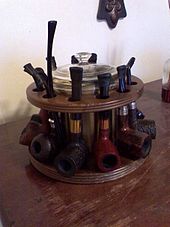
Erica is a genus of roughly 857 species of flowering plants in the family Ericaceae. The English common names heath and heather are shared by some closely related genera of similar appearance. The genus Calluna was formerly included in Erica – it differs in having even smaller scale-leaves, and the flower corolla consisting of separate petals. Erica is sometimes referred to as "winter heather" to distinguish it from Calluna "summer heather".

Calluna vulgaris, common heather, ling, or simply heather, is the sole species in the genus Calluna in the flowering plant family Ericaceae. It is a low-growing evergreen shrub growing to 20 to 50 centimetres tall, or rarely to 1 metre (40 in) and taller, and is found widely in Europe and Asia Minor on acidic soils in open sunny situations and in moderate shade.

Daboecia, or St. Dabeoc's heath, is a small genus of flowering plants in the family Ericaceae, containing two evergreen shrubs, closely related to the genus Erica. They are native to cliffs and heathland in southern Atlantic Europe and the Azores.

Dasiphora fruticosa is a species of hardy deciduous flowering shrub in the family Rosaceae, native to the cool temperate and subarctic regions of the northern hemisphere, often growing at high altitudes in mountains. Dasiphora fruticosa is still widely referenced in the horticultural literature under its synonym Potentilla fruticosa. Common names include shrubby cinquefoil, golden hardhack, bush cinquefoil, shrubby five-finger, widdy, and kuril tea.
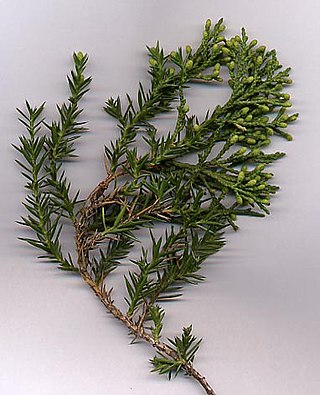
Juniperus chinensis, the Chinese juniper is a species of plant in the cypress family Cupressaceae, native to China, Myanmar, Japan, Korea and the Russian Far East. Growing 1–20 metres tall, it is a very variable coniferous evergreen tree or shrub.

Erica vagans, the Cornish heath or wandering heath, is a species of flowering plant in the family Ericaceae, native to Ireland, Cornwall, western France and Spain. It is a vigorous, spreading, evergreen heather reaching 75 cm (30 in) tall and wide, with pink flowers borne in racemes 14 cm (6 in) long in summer and autumn. The Latin specific epithet vagans literally means "wandering"; in this context it means "widely distributed".

Erica cinerea, the bell heather, is a species of flowering plant in the heath family Ericaceae, native to western and central Europe.

Erica carnea, the winter heath, winter-flowering heather, spring heath or alpine heath, is a species of flowering plant in the family Ericaceae, native to mountainous areas of central, eastern and southern Europe, where it grows in coniferous woodlands or stony slopes.

Juniperus squamata, the flaky juniper, or Himalayan juniper is a species of coniferous shrub in the cypress family Cupressaceae, native to the Himalayas and China.

Pinus patula, commonly known as patula pine, spreading-leaved pine, or Mexican weeping pine, and in Spanish as pino patula or pino llorón, is a tree native to the highlands of Mexico. It grows from 24° to 18° North latitude and 1,800–2,700 m (5,900–8,900 ft) above sea level. The tree grows up to 30 m (98 ft) tall. It can only withstand short periods of temperatures as low as −10 °C (14 °F), but resists well occasional dips below 0 °C (32 °F). It is moderately drought-tolerant, and in this respect is superior to Pinus taeda. The average annual rainfall in its native habitat is from 750 to 2000 mm. This falls mostly in summer, but in a little area of the State of Veracruz on the Sierra Madre Oriental its habitat is rainy the year round.

Symphyotrichum ericoides, known as white heath aster, frost aster, or heath aster, is a species of flowering plant in the family Asteraceae native to much of central and eastern North America. It has been introduced to parts of Europe and western Asia.

Prunus lusitanica, the Portuguese laurel cherry or Portugal laurel, is a species of flowering plant in the rose family Rosaceae, native to southwestern France, Spain, Portugal, Morocco, and Macaronesia.

Spiraea japonica, the Japanese meadowsweet or Japanese spiraea, is a plant in the family Rosaceae.

Erica lusitanica is a European species of flowering plant in the family Ericaceae, known by the common names Portuguese heath and Spanish heath.

Lavandula dentata, the fringed lavender or French lavender, is a species of flowering plant in the family Lamiaceae, native to the Mediterranean basin, Eritrea, Ethiopia, Yemen, and the Arabian peninsula. Growing to 60 cm (24 in) tall, it has gray-green, linear or lance-shaped leaves with toothed edges and a lightly woolly texture. The long-lasting, narrow spikes of purple flowers, topped with pale violet bracts, first appear in late spring. The whole plant is strongly aromatic with the typical lavender fragrance.
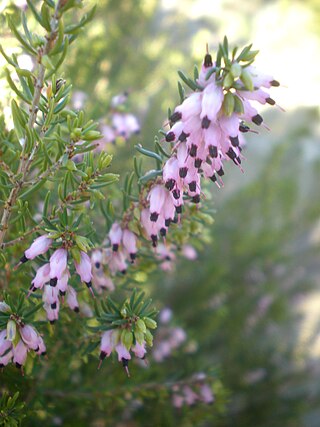
Erica erigena, the Irish heath, is a European species of flowering plant in the family Ericaceae.
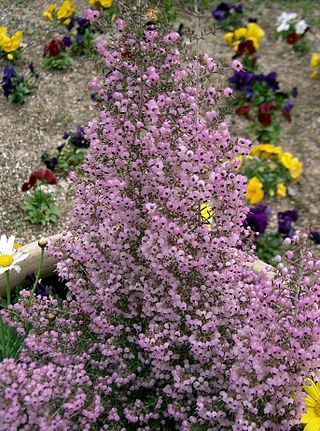
Erica canaliculata, the channelled heath or hairy grey heather, is a South African species of flowering plant in the family Ericaceae.
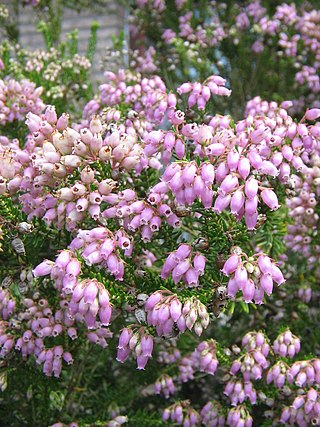
Erica terminalis, the Corsican heath or upright heath, is a European species of flowering plant in the family Ericaceae.

Erica australis, the Spanish heath or Spanish tree heath, is a European species of flowering plant in the family Ericaceae.
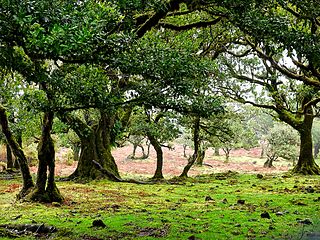
The Madeira evergreen forests is a laurissilva ecoregion of southwestern Europe. It covers the archipelago of Madeira and some nearby islands in the Atlantic Ocean. Laurel forest, known as laurissilva, once covered the islands. Over centuries the laurel forests were mostly cleared. Madeira's remaining forests are now protected.




